Ditapis dengan

Alternative futures of global governance: scenarios and perspectives from the…
Abstract Purpose – The purpose of this paper is to provide a critical and informative exploration of the emerging roles and rising influence of the Global South in shaping the future of global governance. Specifically, it inquires into the following questions: How is the Global South impacting the way we govern globally? What are the pushers, pulls and weights to the futures of global govern…
- Edisi
- Foresight
- ISBN/ISSN
- -
- Deskripsi Fisik
- 19 halaman
- Judul Seri
- Alternative futures of global governance: scenarios and perspectives from the Global South
- No. Panggil
- ATC PO SHE a
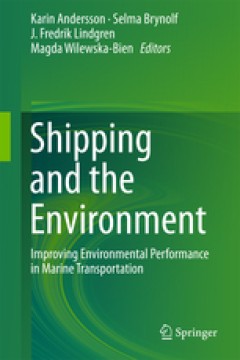
Shipping and the environment : improving environmental performance in maritim…
- Edisi
- -
- ISBN/ISSN
- 978-3-662-49045-7
- Deskripsi Fisik
- xxiii, 426 p.
- Judul Seri
- -
- No. Panggil
- TXT MR AND s
- Edisi
- -
- ISBN/ISSN
- 978-3-662-49045-7
- Deskripsi Fisik
- xxiii, 426 p.
- Judul Seri
- -
- No. Panggil
- TXT MR AND s
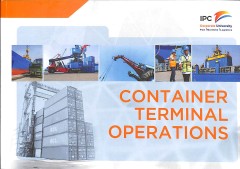
Container Terminal Operations
This book describe the activities, facilities and operation of the container terminal. Beside Explain the role of the container terminal in cargo handling and Discuss organizational structure, management, supervision and control of the container terminal.
- Edisi
- -
- ISBN/ISSN
- -
- Deskripsi Fisik
- 114 p., : illus : 15 cm
- Judul Seri
- -
- No. Panggil
- IPC GUI IND c
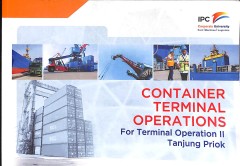
Container Terminal Operations : For Terminal Operation II Tanjung Priok
This book describe the activities, facilities and operation of the container terminal. Besides discuss organizational structure, management, supervision and control of container terminal Explain the role of the container terminal in cargo handling and safety working environment.
- Edisi
- -
- ISBN/ISSN
- -
- Deskripsi Fisik
- 114 p., : illus : 15 cm
- Judul Seri
- -
- No. Panggil
- IPC GUI IND c

Environmental sustainability in logistics and freight transportation - A lite…
The environmental impacts of transportation are rarely brought into decision making frameworks. The purpose of this paper is to introduce a framework and tool to help in these organizational decisions
- Edisi
- Vol. 33 No. 4, 2010 pp. 317-339
- ISBN/ISSN
- 2040-8269
- Deskripsi Fisik
- 25 p.
- Judul Seri
- Management Research Review
- No. Panggil
- ATC LO GUE e C.1

Psychosocial risk assessment in organizations: Concurrent validity of the bri…
The Management Standards Indicator Tool (MSIT) is a 35-item self-report measure of the psychosocial work environment designed to assist organizations with psychosocial risk assessment. It is also used in work environment research. Edwards and Webster presented a 25-item version of the MSIT based on the deletion of items having a factor loading of < .65. Stress theory and research suggest that p…
- Edisi
- Vol. 27, No. 4, 403–412
- ISBN/ISSN
- 1464-5335
- Deskripsi Fisik
- 11 p.
- Judul Seri
- Work & Stress
- No. Panggil
- ACT MG HOU p C.1

An Assessment of the Applicability of an Environmental Management System (EMS…
- Edisi
- -
- ISBN/ISSN
- -
- Deskripsi Fisik
- vii, 85 p., illus : 29 cm
- Judul Seri
- -
- No. Panggil
- TD PO ARI a
- Edisi
- -
- ISBN/ISSN
- -
- Deskripsi Fisik
- vii, 85 p., illus : 29 cm
- Judul Seri
- -
- No. Panggil
- TD PO ARI a

Opportunities for increased profit and reduced cost and emissions by service …
This paper investigates opportunities for increased profit and reduced emissions and cost by service differentiation within container shipping. Traditionally the strategy among the container lines has been profit maximization by utilizing economies of scale through the building of larger and faster vessels. In 2008, the financial crisis in combination with higher fuel prices put an end to this …
- Edisi
- 2015
- ISBN/ISSN
- 1464-5254
- Deskripsi Fisik
- 16 p.
- Judul Seri
- Maritime Policy & Management he flagship journal of international shipping and port research
- No. Panggil
- ATC LO LIN o

Lean and green in the transport and logistics sector – a case study of simu…
The transport and logistics sector is of vital importance for the stimulation of trade and hence the economic development of nations. However, over the last few years, this sector has taken central stage in the green agenda due to the negative environmental effects derived from its operations. Several disciplines including operations research and sub-areas of supply chain management such as gre…
- Edisi
- 2016
- ISBN/ISSN
- 1366-5871
- Deskripsi Fisik
- 13 p.
- Judul Seri
- Production Planning & Control The Management of Operations
- No. Panggil
- ATC LO REY l

Identifying Country Environments to Increase Container Traffic Volumes
We witnessed significant technological changes in shipping, including the development of jet aircraft engines and the use of containerization in ocean shipping. In the maritime industry, more than 90 percent of international cargo moves through seaports, and 80 percent of seaborne cargo moves in containers. This shows that the importance of seaborne trade, in particular, trade by containers. Th…
- Edisi
- Volume 27 Number 1 April 2011 pp. 157-185
- ISBN/ISSN
- -
- Deskripsi Fisik
- 30 p.
- Judul Seri
- The Asian Journal of Shipping and Logistics
- No. Panggil
- ATC LO CHO i

Greening ports and maritime logistics: A review
This paper aims to examine the past and present research on ‘green ports and maritime logistics’ in order to identify established research streams and fertile research areas with potential for future investigations. Using rigorous bibliometric and network analysis tools, the paper completes a systemic mapping of the existing literature and identifies the key investigators, collaboration pat…
- Edisi
- 2015
- ISBN/ISSN
- -
- Deskripsi Fisik
- 15 p.
- Judul Seri
- Greening ports and maritime logistics
- No. Panggil
- ATC LO DAV g

Carbon management in the logistics and transportation sector: an overview and…
While many studies have addressed the issue of environmental sustainability within the supply chain as a whole, so far no attempt has been made to specifically investigate the current status of carbon management issues in the logistics and freight transportation sector. This paper aims to fill this gap by providing a systematic literature review of publications in the area of carbon management …
- Edisi
- 2017
- ISBN/ISSN
- 1758-3012
- Deskripsi Fisik
- 20 P.
- Judul Seri
- Carbon Management
- No. Panggil
- ATC LO HER c

Success in innovation implementation
Increasingly, how well organisations innovate is becoming the single most important issue in determining their ultimate success. Referen- cing a variety of cases primarily drawn from governmental organisations, this paper argues that the key to successful innovation imple- mentation rests on the convergence of three different factors. First, an innovation must be properly framed in terms of sta…
- Edisi
- Vol. 5, No. 4, 2001, pp. 341±359
- ISBN/ISSN
- 1363±254X
- Deskripsi Fisik
- 21P
- Judul Seri
- Journal of Communication Management
- No. Panggil
- ATC MG JOH s

Assessing the Environmental Impact of Maritime Operations in Ports: A Systems…
This chapter presents a framework which is accessible to port authorities to assess the potential environmental impact of maritime operations. Pursuant on globalisation, increased numbers of shipmovements have generatedmore frequent routine maritime operations in ports but few formal approaches exist for assessing their environmental impact, which potentially could be significant. In a novel f…
- Edisi
- 2012
- ISBN/ISSN
- 978-1-78052-340-8
- Deskripsi Fisik
- 25P
- Judul Seri
- Maritime Logistics
- No. Panggil
- ATC LO DIN a

Process Simulation and Optimization in Sustainable Logistics and Manufacturing
The EcoProduction Series is a forum for presenting emerging environmental issues in Logistics and Manufacturing. Its main objective is a multidisciplinary approach to link the scientific activities in various manufacturing and logistics fields with the sustainability research. It encompasses topical monographs and selected conference proceedings, authored or edited by leading experts as well as…
- Edisi
- -
- ISBN/ISSN
- 978-3-319-07347-7
- Deskripsi Fisik
- 182P
- Judul Seri
- Environmental Issues in Logistics and Manufacturing
- No. Panggil
- TXT LO PAW p

Stakeholder awareness of climate adaptation in the commercial seaport sector:…
Seaports ascriticalshore-basedinfrastructureareparticularlyvulnerabletoimpactssuchassealevelriseand increasingincidentsofsevereweatherevents.Inexcessofninetypercentofglobaltradebyvolumis transportedbysea.InIreland,seaportsareofstrategicimportancetothenationaleconomy.Asanisland nation,ninetyeightpercentoftradebyvolumecomesthroughitsseaports.ClimateissuesfacingIrish portsincludeincreasingstormine…
- Edisi
- -
- ISBN/ISSN
- 0308-5970
- Deskripsi Fisik
- 10 p.
- Judul Seri
- Marine Policy
- No. Panggil
- ATC PO FFE s

Evaluating economic and environmental efficiency of global airlines: A SBM-DE…
This study examined the economic and environmental efficiency of 27 global airlines in 2010. An extended environmental slacks-based measure data envelopment analysis model with the weak disposability assumption was developed to assess the efficiency of the airlines. Asia-based airlines are generally more efficient, followed by European and American airlines. The poor fuel consumption is a major…
- Edisi
- -
- ISBN/ISSN
- 1361-9209
- Deskripsi Fisik
- 5 p.
- Judul Seri
- Transportation Research Part D
- No. Panggil
- ATC PO ANG e

Environmental assessment of dredged sediment in the major Latin American seap…
central coast of the São Paulo State, Brazil. Sediment qualitywas evaluated through physicochemical analysis and toxicity tests of sediments collected in the disposal site and adjacent area. The physicochemical characterization of the sediments involved grain size distribution, concentrations of polycyclic aromatic hydrocarbons (PAHs), chlorinated and aromatic hydrocarbons, polychlorinated bip…
- Edisi
- -
- ISBN/ISSN
- 0048-9697
- Deskripsi Fisik
- 9 p.
- Judul Seri
- Science of the Total Environment
- No. Panggil
- ATC PO SAR e

Dendrochronological evaluation of ship timber from Charlestown Navy Yard (Bos…
More than 200 ships were built, and thousands serviced, at Charlestown Navy Yard (Boston, MA) in its 174 years of service for the U.S. Navy (1800–1974 C.E.). Recent redevelopment of portions of the former yard revealed an historic timber pond where hundreds of unfinished naval-quality ship timbers were intentionally sunk and remained buried until ca. 2008. Many of these timbers were offered t…
- Edisi
- -
- ISBN/ISSN
- 1125-7865
- Deskripsi Fisik
- 8 p.
- Judul Seri
- Dendrochronologia
- No. Panggil
- ATC PO MAN d

Chittagong, Bangladesh
Located in the southeast, metropolitan Chittagong is the second largest city in Bangladesh. Its strategic location as the busiest seaport in the region has made it a major economic hub attracting strong inflows of foreign investment into the production of apparel, ship breaking and oil refinery activities. The city boasts a deep harbor that supports strongly commerce, business and industrial a…
- Edisi
- -
- ISBN/ISSN
- 0264-2751
- Deskripsi Fisik
- 11 p.
- Judul Seri
- Cities
- No. Panggil
- ATC PO ESH c
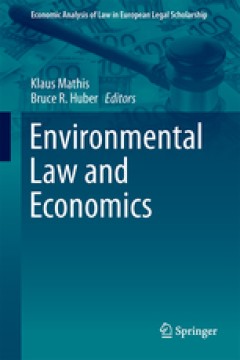
Environmental law and economics
- Edisi
- -
- ISBN/ISSN
- 978-3-319-50932-7
- Deskripsi Fisik
- xxi, 534 p.
- Judul Seri
- -
- No. Panggil
- TXT MG MAT e
- Edisi
- -
- ISBN/ISSN
- 978-3-319-50932-7
- Deskripsi Fisik
- xxi, 534 p.
- Judul Seri
- -
- No. Panggil
- TXT MG MAT e

Chapter 2 : strategic challenges to container port in a changing market envi…
The global market place, with powerful and relatively footloose players, extensive business networks and complex logistics systems creates a high degree of uncertainty in the port industry and leaves port managers with the question of how to respond effectively to market dynamics. The focus of port competition is gradually changing and so are the roles of the various stakeholders involved. This…
- Edisi
- -
- ISBN/ISSN
- 0739-8859
- Deskripsi Fisik
- 24 p.
- Judul Seri
- -
- No. Panggil
- ATC PO NOT c

Model for integrated project management
Although there has been important research on construction management’s life cycle, stakeholders, micro and macroenvironment, there has not been a model defi ned that can link the above. This while the need to integrate construction management’s life cycle, stakeholders, micro and macroenvironment into both theory and practice is essential. The Model for integrated project management, descr…
- Edisi
- -
- ISBN/ISSN
- -
- Deskripsi Fisik
- 13 p.
- Judul Seri
- Journal of Business Economics and Management
- No. Panggil
- ATC MG SCH m

Asset management determinants of polish universities
The purpose of the paper is to offer insights into university asset management (AM) and describe the impact that the various determinants have on the process of university AM. The process of university AM is influenced by a range of determinants.
- Edisi
- -
- ISBN/ISSN
- -
- Deskripsi Fisik
- 21 p .
- Judul Seri
- -
- No. Panggil
- ATC MG TRO a

Dilemmas of balancing organizational and public interests : how environment a…
Corporate social responsibility implies more attention to company relationships with governments and other stakeholders. The need for intensive interaction is most conspicuous when company activities come close to the provision of (former) public goods, which also have strong environmental and social implications. This article examines how ports deal with environmental issues in their strategie…
- Edisi
- Vol. 20, No. 1
- ISBN/ISSN
- -
- Deskripsi Fisik
- 10 p.
- Judul Seri
- -
- No. Panggil
- ATC PO KOL d

Strategic levers of port authorities for industrial ecosystem development
Major ports such as Rotterdam, Antwerp, Houston and Singapore’s Jurong Port host large industrial complexes of (petro)chemical and other energy-intensive process industry firms. Port authorities face the challenge to contribute to both greater international competitiveness and better environmental performance of these complexes. The development of industrial ecosystems, in which firms located…
- Edisi
- Vol. 17, 1
- ISBN/ISSN
- -
- Deskripsi Fisik
- 18 p.
- Judul Seri
- Maritime Economics & Logistics
- No. Panggil
- ATC PO HOL s

Measures for evaluating green shipping practices implementation
Despite the need for environmental management in shipping, there is no extant measurement scale that comprehensively captures green shipping practices (GSP) in shipping operations. In view of this research void, we investigate the construct of and develop a measurement scale for evaluating GSP implementation in the shipping industry. Based on conceptualisation of GSP in an earlier study and sur…
- Edisi
- Vol. 5, No. 2
- ISBN/ISSN
- -
- Deskripsi Fisik
- 19 p.
- Judul Seri
- Int. J. Shipping and Transport Logistic
- No. Panggil
- ATC PO LAI m

Applied process knowledge and market performance: the moderating effect of en…
Challenges the idea of an unconditional and positive influence of knowledge on performance without regard to environmental uncertainty. Focuses on applied process knowledge spanning the supply chain (i.e. considers supplier, internal, and customer sources). A survey of 208 manufacturing firms found the association between applied process knowledge and firm market performance is positive and sta…
- Edisi
- Vol. 5 Issue: 3, pp.264-278
- ISBN/ISSN
- -
- Deskripsi Fisik
- 16 p .
- Judul Seri
- Journal of Knowledge Management
- No. Panggil
- ATC LO GER a

Performance measurements in the greening of supply chains
In response to increasing demands on improved environmental performance, companies need to develop their capabilities in assessing the environmental performance of their operations. Knowledge among practitioners as well as solid research results in this area is lacking. This paper aims to present a framework of dimensions, which are important to consider regarding environmental measurement in s…
- Edisi
- Volume 17 · Number 1 · 2012 · 29–39
- ISBN/ISSN
- -
- Deskripsi Fisik
- 14 p.
- Judul Seri
- Supply Chain Management: An International Journal
- No. Panggil
- ATC LO ABR p

Logistics service providers and corporate social responsibility: sustainabili…
The purpose of this paper is to present a content analysis of corporate social responsibility (CSR) reports published by logistics service providers (LSPs), and to analyse factors influencing the level and scope of reporting. In order to address this objective, the authors show to what extent various social and environmental categories are covered in the CSR reports. The authors also investigat…
- Edisi
- Vol. 45 No. 5, 2015
- ISBN/ISSN
- -
- Deskripsi Fisik
- 29 p.
- Judul Seri
- International Journal of Physical Distribution & Logistics Management
- No. Panggil
- ATC LO BJO l

Exploring logistics-related environmental sustainability in large retailers
The purpose of this paper is to explore and illustrate ways in which the world’s largest retailers describe their logistics-related environmental considerations, their environmental indicators applied to measure the effects of these considerations and their environmental consciousness in their CSR reports.
- Edisi
- Vol. 44 No. 1, 2016 pp. 38-57
- ISBN/ISSN
- -
- Deskripsi Fisik
- 22 p.
- Judul Seri
- International Journal of Retail & Distribution Management
- No. Panggil
- ATC LO BJO e

Matches and gaps in the green logistics market
The interface between logistics service providers (LSPs) and shippers is an area that has received little attention in previous research and even less has been done when environmental issues are added to this interface. Nonetheless, the perception among researchers and the industry is that in many instances, supply and demand in this green interface does not coincide. The purpose of this paper …
- Edisi
- Vol. 42 No. 6, 2012 pp. 562-583
- ISBN/ISSN
- -
- Deskripsi Fisik
- 24 p.
- Judul Seri
- International Journal of Physical Distribution & Logistics Management
- No. Panggil
- ATC LO MAR m

The purpose and focus of environmental performance measurement systems in log…
Environmental performance measurement systems (EPMS) in supply chains are increasingl important.The aim of this paper is to investigate the purposes of having an EPMS in logistics and inwhat ways the purpose of an EPMS can influence its focus in the supply chain.
- Edisi
- Vol. 62 No. 3, 2013 pp. 230-249
- ISBN/ISSN
- -
- Deskripsi Fisik
- 22 p.
- Judul Seri
- International Journal of Productivity and Performance Management
- No. Panggil
- ATC LO FOR t

Major business-environment influences on the cereal products industry supply …
The purpose of the paper is to provide a contextual basis for the supply chain activity of the generic Australian cereal products supply chain. It identifies the business-environment factors underpinning the cereal products supply chain efficiency. It also further highlighted the complex nature of the extended supply chain and all the factors to be considered in its management. The approach to …
- Edisi
- Vol. 36 No. 1, 2006
- ISBN/ISSN
- -
- Deskripsi Fisik
- 17 p.
- Judul Seri
- International Journal of Physical Distribution & Logistics Management
- No. Panggil
- ATC LO PER m

Benchmarking supply chain sustainability: insights from a field study
Given the relevance of supply chain sustainability, the aim of the present paper is threefold: first, to investigate the strategies currently undertaken by companies in the supply chain sustainability arena, and, second, to find out which phase of the supply chain is at the forefront in th implementation of initiatives towards more sustainable supply chains. Finally, the criteria commonly used…
- Edisi
- Vol. 18 No. 5, 2011
- ISBN/ISSN
- -
- Deskripsi Fisik
- 30 p.
- Judul Seri
- Benchmarking: An International Journal
- No. Panggil
- ATC LO PER b

Reverse logistics innovation, institutional pressures and performance
The purpose of this study is to draw on several perspectives rarely used in reverse logistics (RL) research – such as sustainable development, the natural resource-based view and green innovation – to examine the relationship between RL innovation and environmental and economic performance while incorporating institutional theory to verify how institutional pressures moderate these relation…
- Edisi
- Vol. 37 No. 7, 2014
- ISBN/ISSN
- -
- Deskripsi Fisik
- 28 p .
- Judul Seri
- Management Research Review
- No. Panggil
- ATC LO CHU r

Salient task environment, reverse logistics and performance
The purpose of this paper is to investigate the impact of the salient task environment on reverse logistics (RL) practices and organizational performance in the context of Taiwanese computer, communication, and consumer (3C) electronics retail industry.
- Edisi
- Vol. 45 No. 9/10, 2015 pp. 979-1006
- ISBN/ISSN
- -
- Deskripsi Fisik
- 30 p.
- Judul Seri
- International Journal of Physical Distribution & Logistics
- No. Panggil
- ATC LO RAH s

Product carbon footprint developments and gaps
Over the last decade, multiple initiatives have been undertaken to learn how to capture the carbon footprint of a supply chain at a product level. The purpose of this paper is to focus on the process of standardization to secure consistency of product carbon footprinting (PCF) and to outline how the current developments in PCF support the need for a standardized method to measure and report env…
- Edisi
- Vol. 42 No. 4, 2012
- ISBN/ISSN
- -
- Deskripsi Fisik
- 19 p.
- Judul Seri
- International Journal of Physical Distribution & Logistics Management
- No. Panggil
- ATC LO KRO p

Logistics in the “three-day car” age: Assessing the responsiveness of veh…
It is now becoming apparent that the prevalent “stock‐push” approach in the automotive industry of building vehicles against a long‐term forecast and fulfilling the large majority of orders from existing stock is no longer a viable proposition. Pressure from rising stock levels in the market and the discounts needed to sell these vehicles is forcing the vehicle manufacturers to rethink …
- Edisi
- 32 (10). pp. 829-850
- ISBN/ISSN
- -
- Deskripsi Fisik
- 25 p.
- Judul Seri
- International Journal of Physical Distribution & Logistics Management
- No. Panggil
- ATC LO MIE l

The diffusion of environmental management system and its effect on environmen…
The purpose of this paper is to examine the diffusion of ISO 14001-based environmental management system (EMS) on five key organisational functions, namely production, procurement, sales, logistics, and R&D. In examining the EMS diffusion, this paper focuses on two aspects of diffusion: the extent of diffusion of EMS and the balance of EMS diffusion across the five organisational functions.
- Edisi
- Vol. 34 No. 5, 2014 pp. 565-585
- ISBN/ISSN
- -
- Deskripsi Fisik
- 23 p.
- Judul Seri
- International Journal of Operations & Production Management
- No. Panggil
- ATC LO HUN t

E-logistics and the natural environment
Organizations realize that a strong supporting logistics or electronic logistics (e-logistics) function is an important organizational offering from both the commercial and the consumer perspective. The implications of e-logistics models and practices cover the forward and reverse logistics functions of organizations. They also have a direct and profound impact from an environmental perspective…
- Edisi
- Volume 9 · Number 4 · 2004
- ISBN/ISSN
- -
- Deskripsi Fisik
- 13 p.
- Judul Seri
- Supply Chain Management: An International Journal
- No. Panggil
- ATC LO TAL e

Extending green practices across the supply chain: The impact of upstream and…
This research aims to extend the “collaborative paradigm” proposed by others in prior research beyond a supply chain’s core operations. To date, this paradigm has generated relatively little empirical research on peripheral, non-core areas such the natural environment. Antecedents (both plant-level and supply chain characteristics) of green supply chain practices (GSCP) are examined. Amon…
- Edisi
- Vol. 26 No. 7, 2006 pp. 795-821
- ISBN/ISSN
- -
- Deskripsi Fisik
- 47 p.
- Judul Seri
- International Journal of Operations & Production Management
- No. Panggil
- ATC LO KLA e

An analysis of keywords used in the literature on green supply chain management
The purpose of this paper is to analyze the keywords used in peer-reviewed literature on green supply chain management.
- Edisi
- Vol. 38 Iss 2 pp. 166 - 194
- ISBN/ISSN
- 2040-8269
- Deskripsi Fisik
- 31 p.
- Judul Seri
- Management Research Review
- No. Panggil
- ATC LO GUR a

Themes and challenges in making supply chains environmentally sustainable
The purpose of this article is to explore themes and challenges in making supply chains environmentally sustainable.
- Edisi
- Vol. 17 Issue: 5, pp.517-530
- ISBN/ISSN
- -
- Deskripsi Fisik
- 17 p.
- Judul Seri
- Supply Chain Management: An International Journal
- No. Panggil
- ATC LO ABB t

Organization-environment relationships : theory for management practice in hu…
The article discusses lessons for executive directors in human service organizations, for managing organization-environment relationships. The first section reviews the three main theories of organizationenvironment relations: ecological theories, institutional theories, and adaptation theories (with emphasis on the political-economy and resource-dependency perspectives). Following this present…
- Edisi
- Vol. 28(1) 2004
- ISBN/ISSN
- 0364-3107
- Deskripsi Fisik
- 18 p.
- Judul Seri
- -
- No. Panggil
- ATC MG SCH o

Slacks-based efficiency measures for modeling environmental performance
We develop two slacks-based efficiency measures for modeling environmental performance on the basis of environmental DEA technology. Of the two measures, one is a composite index with a higher discriminating power for modeling economic–environmental performance, and the other can be used to estimate the impacts of environmental regulations. We apply the proposed measures to model the CO2 emis…
- Edisi
- -
- ISBN/ISSN
- -
- Deskripsi Fisik
- 9 p.
- Judul Seri
- -
- No. Panggil
- ATC MG POH s

Leveraging closed-loop orientation and leadership for environmental sustainab…
The paper’s aim is to develop a closed-loop supply chain orientation as a strategic alternative available to supply chain organizations seeking competitive advantage in a setting that puts a premium on socially responsible decisions.
- Edisi
- Volume 14 · Number 2 · 2009 · 87–98
- ISBN/ISSN
- -
- Deskripsi Fisik
- 15 p.
- Judul Seri
- Supply Chain Management: An International Journal
- No. Panggil
- ATC LO MOL l
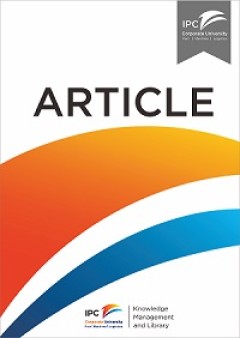
Developmental networks at work : holding environments for leader development
The purpose of this paper is to elaborate how an adult development perspective can further the understanding of developmental networks as holding environments for developing leaders confronted with challenging experiences.
- Edisi
- Vol. 18 No. 3, 2013 pp. 232-256
- ISBN/ISSN
- -
- Deskripsi Fisik
- 27 p.
- Judul Seri
- Career Development International
- No. Panggil
- ATC LE GHO d

Port performance in Asia- does production efficiency imply environmental effi…
Atmospheric and water pollution are two main sources of negative environmental externalities generated by shipping. This study recognizes the negative externalities in the production of port services in East Asia by explicitly incorporating environmental impacts of shipping. Programming techniques are used to analyze 156 Origin–Destination pairs between 13 major East Asian ports, to derive th…
- Edisi
- -
- ISBN/ISSN
- 1361-9209
- Deskripsi Fisik
- 6 p.
- Judul Seri
- Transportation Research Part D
- No. Panggil
- ATC PO CHI p

A method to estimate climate-critical construction materials applied to seapo…
Climate adaptation for coastal infrastructure projects raises unique challenges because global-scale environmental changes may require similar projects to be completed in many locations over the same time frame. Existing methods to forecast resource demand and capacity do not consider this phenomenon of a global change affecting many localities and the resulting increased demand for resources. …
- Edisi
- -
- ISBN/ISSN
- -
- Deskripsi Fisik
- 12 p.
- Judul Seri
- Global Environmental Change
- No. Panggil
- ATC PO BEC a
 Karya Umum
Karya Umum  Filsafat
Filsafat  Agama
Agama  Ilmu-ilmu Sosial
Ilmu-ilmu Sosial  Bahasa
Bahasa  Ilmu-ilmu Murni
Ilmu-ilmu Murni  Ilmu-ilmu Terapan
Ilmu-ilmu Terapan  Kesenian, Hiburan, dan Olahraga
Kesenian, Hiburan, dan Olahraga  Kesusastraan
Kesusastraan  Geografi dan Sejarah
Geografi dan Sejarah